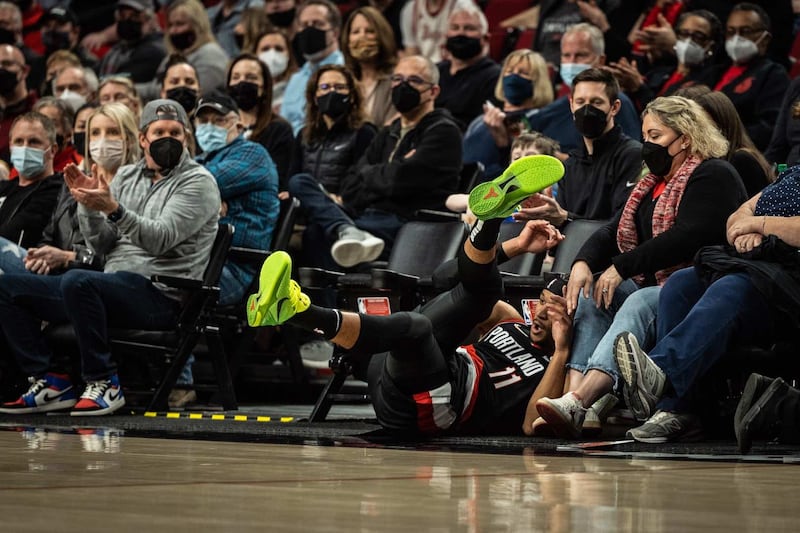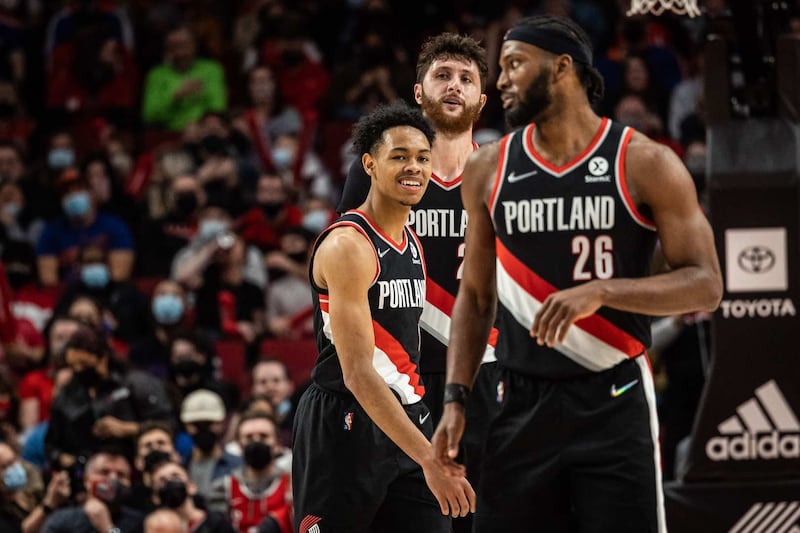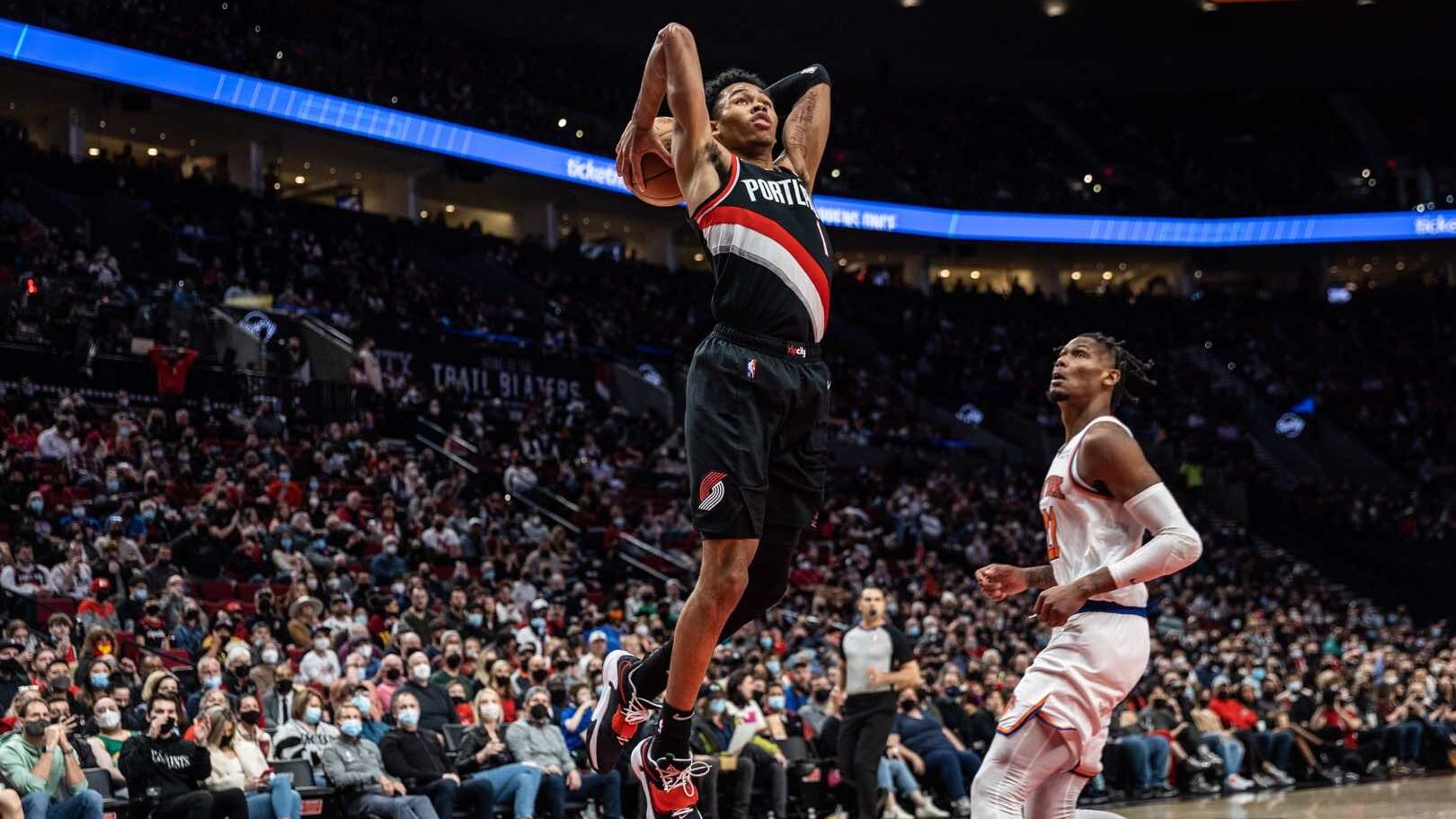Portland Trail Blazers general manager Joe Cronin sent a clear message this week: Neil Olshey is gone. No, seriously, he’s gone.
Cronin and the Blazers spent the lead-up to Thursday’s trade deadline completely overhauling the team’s roster, going so far as to send longtime franchise darling CJ McCollum to the New Orleans Pelicans.
“It had become evident to us that the roster had plateaued,” Cronin said at a press conference on Thursday. “It was a team built to fit a specific coaching style and style of play that we didn’t feel was conducive to the style [head coach] Chauncey [Billups] and myself wanted to play. We were looking at a team that was capped out.”
In total, Cronin made three trades dealing five players to other cities in exchange for seven new players, a protected first-round draft pick, and four second-round picks. The flurry of moves had head coach Chauncey Billups speculating the Blazers may have set some kind of record for most players moved in a single trade deadline.
Crucially, by trading McCollum and Norman Powell, the Blazers wiped more than $140 million in future salary obligations from their books. The seven new additions to the team—of whom only Josh Hart and Keon Johnson seem likely to stick in Portland—carry only $12.6 million in guaranteed salary beyond this year. (Although Justise Winslow may be earning a long-term spot too with solid play in unexpected victories over the Lakers and Knicks in his first two appearances for Portland.)
The overall quality of these trades is up for debate (I found the Powell trade damn near unforgivable), but perseverating on lost players does little to explain what options the Blazers will have in the future. There’s no denying the team has far more salary cap flexibility now than at any other point in recent memory. Eliminating nearly $130 million from a payroll makes a big difference, apparently.
What does flexibility mean to an NBA team?
For NBA teams, roster building flexibility means having access to trades, free agency signings, or draft picks. The Blazers will have all three options available this summer.
“We can be a cap room team, we can be a trade exception team, or we can be a midlevel team,” Cronin said. “We have numerous ways to acquire high-end talent.”
First, they’ll have their own first-round lottery pick—assuming they miss the playoffs—and the Pelicans’ first-round pick if New Orleans is bad enough to miss the playoffs but not so bad they end up with a top-four selection. (This is more likely to happen than not, but there’s ping-pong balls involved.)
After the draft, Cronin will have to choose between creating cap space or re-signing current players. Most realistically, the Blazers could generate about $35 million under the cap by cutting Hart and not re-signing Jusuf Nurkic. Keeping only one of those players creates roughly $20 million in space, and retaining both Hart and Nurkic all but eliminates the Blazers’ cap space.
Alternatively, if they choose to retain their players and operate over the cap, they will have access to the midlevel and biannual exceptions to sign role players to smaller contracts as well as three trade exceptions—one worth over $20 million—that can be used to acquire players in trade.
“Cap room isn’t just in free agency, you can also use it for trades,” Cronin said. “The cap room for us is to have the optionality to go above the $21 million trade exception. The cap room just gives us another vehicle beyond that $21 million number.”
Unfortunately for Cronin, he will have to make a choice between the latter two options: free agent or trade. If the Blazers choose to create cap space, they will have to renounce all of their exceptions, per league rules.
Regardless of that limitation, the key detail is that the Blazers have multiple paths to choose from this offseason. If they want to throw a maximum contract at free agent center Deandre Ayton, they will have the cap space to do it. If they’d rather keep Nurkic and Hart, Cronin can use the various exceptions to bolster the roster.

Why is having options such a new idea for the Blazers?
This flexibility is vital because it means the Blazers are not beholden to a single player or team while re-forming the roster. Depending on who is available, and interested, Cronin will have the option to pursue virtually any player in the league. Free agent or otherwise.
“I’m confident that we can be competitive with free agents,” Cronin said. “With Chauncey Billups, Damian Lillard and myself, we can get into meetings and we’re not afraid to go after players.”
This flexibility stands in stark contrast to Olshey’s philosophy of roster building, which heavily prioritized player retention. Olshey often discussed the perceived limitation that small-market teams, like Portland, have attracting new players, and went out of his way to sign players to onerous long-term deals to avoid the risk of losing them in free agency.
At its worst, Olshey’s mindset created the infamous summer of 2016: Rebuked by Chandler Parsons and Hassan Whiteside (sigh), Olshey’s front office still felt obligated to use its cap space somehow. That “somehow” translated to signing Evan Turner, Allen Crabbe, Maurice Harkless and Meyers Leonard to multiyear deals totaling over a quarter-billion dollars. The Blazers, saddled with multiple negative value contracts and no cap space for years, found themselves locked out of both free agency and most major trade discussions.
Cronin, on the other hand, should not feel pressure to sign free agents to team-hostile contracts. He can either pivot to a trade-centric approach or, given that Lillard is the only player on long-term contract at the moment, look to create cap space for the following offseason.

How does Lillard fit into this plan?
Cronin admitted in Thursday’s press conference that all three trades were made with an eye toward becoming competitive next season—this season is a wash, even if the new guys are surprisingly feisty some nights.
But Cronin wants the team to be good again soon. As in, 10 months from now.
“We want to be competitive. We want to come out and play and win ball games right away,” Cronin said. “Sometimes it doesn’t break that way but our goal is to be aggressive this spring and summer and put together a really competitive roster out of the gate.”
That timeline feels optimistic. The jump from “feisty” to “competitive in the playoffs” is vast.
The Blazers are incredibly shallow after sending out McCollum, Powell, Robert Covington and Larry Nance. Of the current roster, only Lillard, Anfernee Simons, Nurkic and Hart have established themselves as reliably healthy and talented enough to merit long-term spots on the roster. Cronin’s not starting entirely from scratch, but he hasn’t even found all the border pieces to the puzzle yet.
“Tearing it down is a lot easier than building it up,” Cronin said.
Because of the severe lack of raw talent, the Blazers will struggle to lure a marquee free agent or entice another team to part with an all-star. Especially given that they have no extra first-round picks to offer in trades.
A more likely scenario is that Cronin spends the next 12 months filling in the pieces by signing cheap veterans and long-shot prospects as the team waits for its young players to develop. In the meantime, he can accumulate draft capital by using the trade exceptions to take back bad contracts packaged with picks—one of the strategies the Thunder recently used to accumulate 36(!) draft picks over five years.
This type of incremental accumulation of positive-value assets and players is a tried-and-true method of building an NBA team. It ultimately unlocks the possibility of trading for All-NBA players—the caliber of teammates Lillard has rarely had.
Philadelphia 76ers GM Daryl Morey is a master of this type of long-term planning, having acquired and traded multiple superstars over the past decade. (Morey most recently engineered a Ben Simmons for James Harden trade.)
But it’s also a slow strategy. We’re talking several years slow. Lillard, who turns 32 this July, may not have many years left in his prime. It remains unclear how that reality will affect Cronin’s long-term patience and willingness to maintain the hard-earned flexibility the Blazers currently enjoy. He showed restraint this week, reportedly passing on Jerami Grant after the Pistons demanded two first-round picks, but will that patience fade as Lillard’s prime starts to wane?
For his part, after a rocky offseason, Lillard has repeatedly rebuked suggestions that he may want to leave the Blazers. Beyond that, it remains a mystery how Lillard views his long-term role with the team, even as both sides appear ready to sign a two-year, $107 million extension this summer that will run through 2027. Some league insiders expect, as his skills inevitably deteriorate with age, Lillard will play the role Chris Paul currently has in Phoenix: the highly-paid veteran leader who has the experience and savvy to optimally complement younger teammates.
Unless Cronin hits an NBA jackpot, probably multiple jackpots, the push-pull of Lillard’s timeline and a team made up almost entirely of very young players will loom large over the next couple years. But Blazers fans can be happy about one thing, regardless of how that negotiation plays out: Someone other than Neil Olshey is finally calling the shots.

